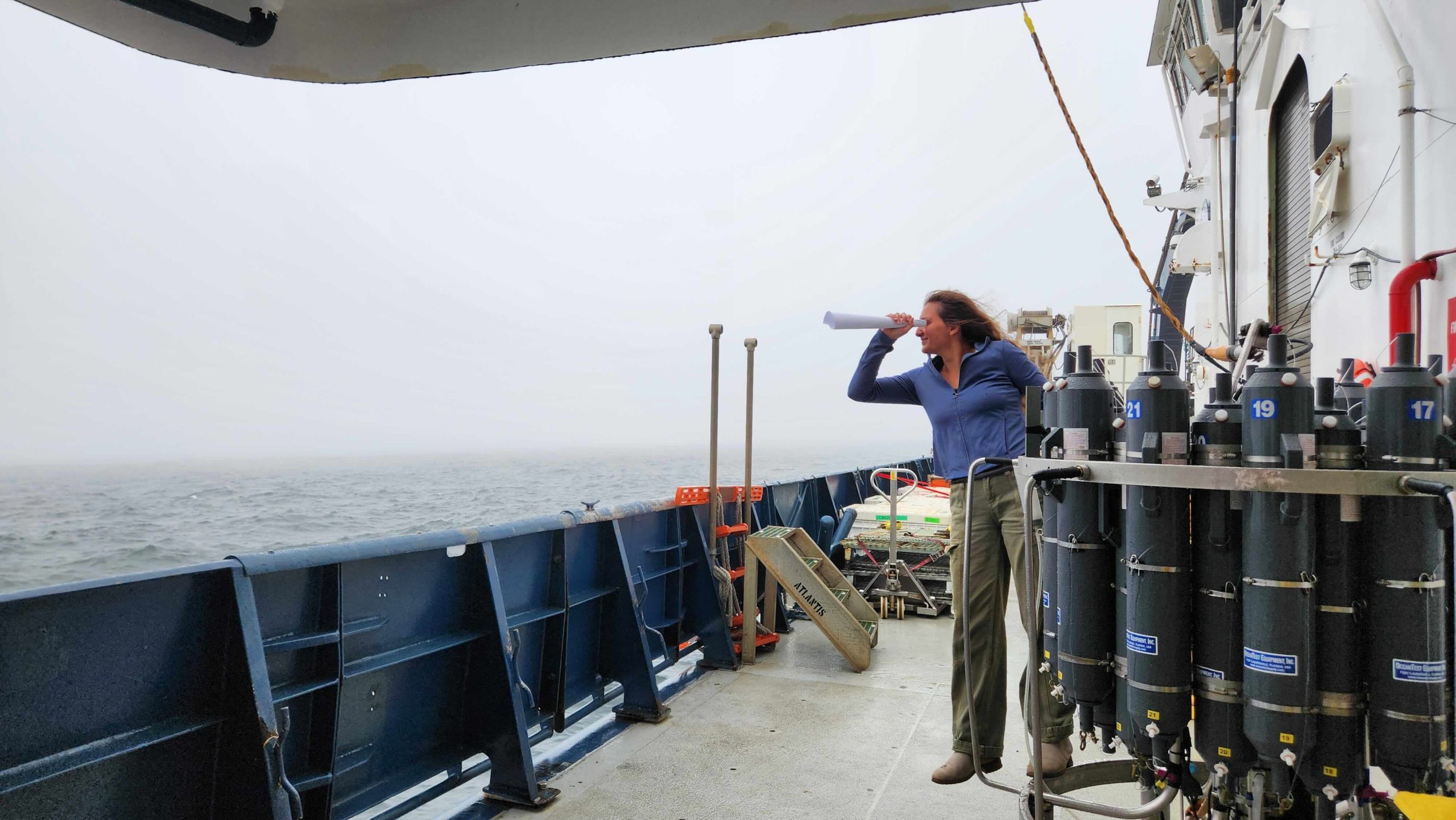
August 14, 2025: Who is the VIP?
A couple nights ago, I went to bed three hours pasted my evening shift observing the Jason dive. This led to consequences of making it extremely difficult to get out of bed the following morning. My first shift starts at 04:00 and ends at 08:00 and the evening (second) shift starts at 16:00 ending at 20:00. Therefore, if I do the math correctly and considering the fact that I wake up at least 30 minutes before my shift begins, that night I only would have gotten 3.5 hours of sleep. At the moment looking at my ringing alarm and the time it was showing, 03:30 in the morning, was absolutely obscure. My brain refused to accept that I had to get up right now and go to the van for my shift. Out of respect for my fellow sailing mates, I scrambled up to the van to find myself being rocked back to sleep, sitting on the back bench as I waited for the switch out. Hypothetically speaking, if I did decide to stay in bed instead of showing up to my shift, to what extent would my absence affect the rest of the ship? This made me question, who is the most important crew member on the ship?
This question has taken me on a quest. It has been a debatable question amongst the crew and the students. The answers varied from the SSSGs, to the engineer, to the Captain, to the crew as a whole, to the science party. The answers to the question were jumping all over the place. At this point I was convincing myself that perhaps there is not such of a thing as the most important crew member and that each and every one of us depends on each other, which holds true. However, not until I had the chance of proposing this question to the Captain of the R/V Atlantis.
To my shameful confession I have been running a tad late to our previous student meetings – I was not planning on being a second late to this one. Captain Derek explained to us the hierarchy of the ship. Captain at the top, with all the mates that follow, then there is the chief engineer and the chief steward who are responsible for the engine room and the galley crew, respectively, while the captain oversees them all. Based on this hierarchy, I was thinking that the Captain is the most important crew member. However, to no longer guess, I proposed this question to the Captain, fully convinced that he would answer, the Captain. To my biggest surprise that was not the case.
The “ships’ lookout” or also known as the “Eyes of the ship” has played a significant role in maritime history, often as the first line of defense against dangers at sea. Historically, lookouts were stationed in the crow’s nest (originally a barrel or basket lashed to the mast) to scan for hazards and other vessels. Their duties included reporting potential threats like icebergs, other ships, or enemy activity, often well before anyone else on the ship. Lookouts’ vigilance could be the disaster, as illustrated by the Titanic sinking, where lookouts lacked binoculars and failed to spot an iceberg in time. However, I guess you can judge for yourself which answer you prefer more. Perhaps I am the VIP, I’ve sure been looking out at the ocean lately.
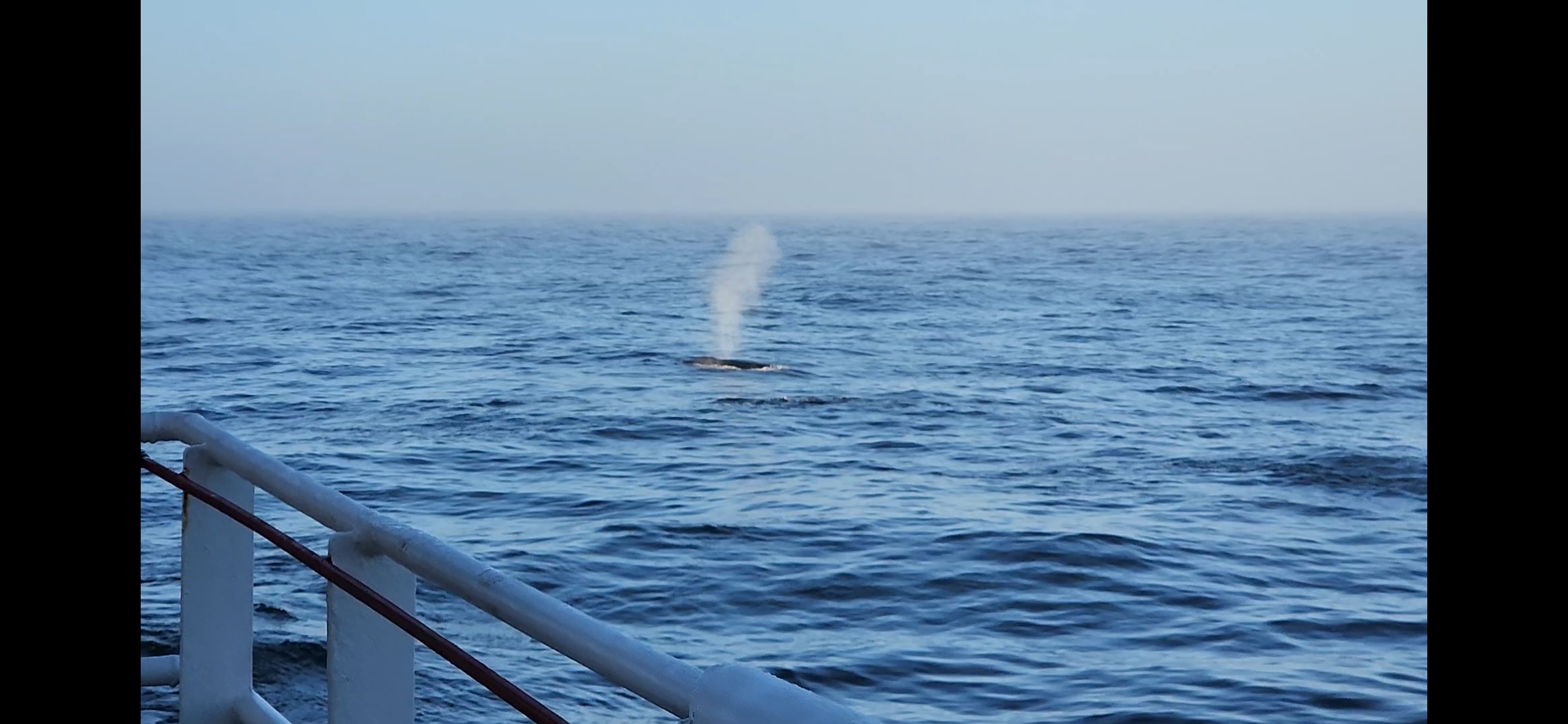
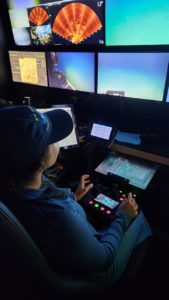
August 12, 2025: The Chain of Events
It was the perfect morning, as usual I woke up to pitch darkness followed by a slowly tickling sunrise. Seeing the rising sun peak out from the horizon made it easier to forget the sleep deprivation from the exciting night, which has been the consequence of an even more exciting morning. There had been a planned Jason dive, my shift had ended, and I was sadly not there to witness the krill invasion on the ship. Waking up that morning I was informed that the planned Jason dive has been canceled. The alignment and the chain of events leading up to this bio-technical event happened like so…
The ship’s engines work in a way that once every couple of minutes, the engine has to be cooled by cold water. This cooling water is taken from the ocean, filtered to get any excess solid materials out so it doesn’t clog the engines, and then flows into the engines to cool them. For the deployment of Jason, a large winch is required on the port side of the ship, well as lighting at night for the safety of the crew and the operation. The ship also has to hold position. This requires the engines to operate at a greater velocity, which means that more water has to be taken in for cooling of the engines.
The Atlantis had transited to the Southern Hydrate Ridge methane seep site where krill thrive. Vertical migration of zooplankton and krill during the night, and krill being attracted to the light coming from the ship, caused a lot of krill to gather at the surrounding water’s surface. During flow of seawater into the engines’ cooling tank, it was determined that the filter of the engine was clogged up with tons of krill. The Atlantis’s engineers graciously collected buckets of krill from the engine room, running up and down the staircase to dump them back overboard. This was the reason for cancellation of the Jason dive last night.
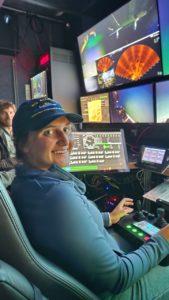
Unfortunately, the fun chaos had passed me by, leaving me to a wonderful, peaceful morning to observe a beautiful event to unfold. Stepping outside into the cool crisp morning, I quickly shuffled my feet up the staircase following Jolee to the upper deck, just in time for a fin whale to peak it’s back out from the water within 10 meters of the ship. The rest of the morning, we circled around the ship’s decks as we spotted whale spouts and tail flips off in the sunrise.
My day ended today in another delightful manner. After a wonderful Italian dinner, I went back to the van for my shift. Chris, one of the Jason pilots, turned around and asked us sitting in the back, does anybody want to pilot? I looked around at Emily sitting next to me and then at Katie, thinking that this honor had been offered to her, Katie replies with “No, he is being serious!” I was up on my feet the same second; with reverence I sat on the Jasons’ pilot chair. This did not feel real, I truly could not believe that this was happening to me. I could not stop smiling as Chris explained to me all the maneuvers that I could possibly do with the controller. I was smiling with all of my 32 teeth and off I went piloting the one of a kind, ROV Jason at a depth of 770 m.
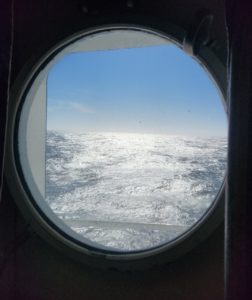
August 10, 2025: The Oceans’ Lullaby:
We are finally seeing clear skies again. The cold mysterious fog has slowly stepped back its’ fronts as we are heading in the direction of shore. The evening sun was shining bright today, covering the passing waves with a coat of shimmering diamonds.
The other day I picked up a book from the ships’ library called, “The Underworld – Journey to the Depths of the Ocean,” by Susan Casey. The book immerses the reader into a breath-taking adventure of deep-sea exploration on a DSV Alvin, which is the US deep-diving research submarine that can seat two science observers in addition to the pilot. As we held station at our desired destination, I went up to the bow to bathe in the sun and read this book. The wind furiously blowing through the pages, out from the back of the books’ back cover went flying an old photograph and flopping on the deck. The photograph depicted a group of people huddled looking at each other, smiling. I scrambled to pick it up as I watched the wind outpace me swishing it up and carrying it off into the ocean.
We have been voyaging out at sea for seven days now, hitting our mid-point milestone. The majority of the day today has been transiting. We have left the hydrothermal vents and are heading back East towards the Slope Base and shore. I wonder how I will feel like when I finally see land. Will it feel like a new discovery, will I scream out “I see land!”?
If you had a Jack Sparrow compass showing the direction of the thing you want most, where would you end up at? After days of questioning different crew members, the question, what do you miss the most? I stumbled across some interesting answers. Some answered the ability to cook for themselves, others the ability to participate in different outdoor activities and attending church, someone answered their cats, one person even answered trees. To my big surprise, many answered taking long showers, which I later had to even put under a caveat when proposing this question. Regardless, far above everything, family and loved ones stood above all else, except for the long hot showers (just kidding). It’s unfortunate that we miss things that make us happy most.
As we are slowly wrapping up the show, a new question lays unanswered, will you miss the ocean while on shore? Will you miss the stillness of time, the static smell of the salty ocean breeze, the secured view of a clear horizon, the sound of the gentle waves, the rocking of the endlessly moving waters, will you miss the oceans’ lullaby? I will.
August 08, 2025
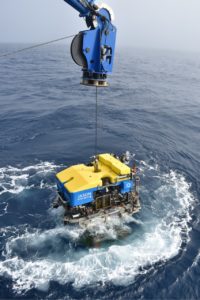
Every day I find myself at the van observing from the back how ROV Jason is being submerged, making its long journey down the deep, dark, seemingly empty waters. Light penetrates to about 200 meters into the water. The rest is filled with darkness, great wonders, and your imagination.
I read a quote on a small white board in the main lab, “We go places where sunlight cannot go and we shine!”. After a 2-hour descent to 1500m, Jason illuminates the seafloor and the seismic hydrothermal field, ASHES, can be seen. Following a large field of volcanic basalt pillows, a 4 meter tall hydrothermal vent, Mushroom, rises. It is blooming with tubeworms, clams, vent mussels, crabs, and many more species to yet be discovered and identified. Life best thrives with the availability of sunlight allowing for vital biological processes such as photosynthesis, which has been known to be the driving mechanism for life on land and in the oceans. Due to the absence of sunlight at greater depths, photosynthesis cannot occur at the ocean seafloor. The hydrothermal vents, with temperatures ranging from 60 to over 400 degrees celsius, as well as the gasses released, allow for alien forms of life to thrive. These organisms rely on processes of chemosynthesis, which use chemical energy provided by the fuming seismic gases, rather than sunlight to sustain life.
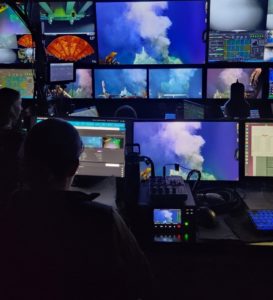
Perhaps as kids we manifest our future when we are asked by adults “who do you want to be when you grow up?” As a little girl I wanted to become an astronaut. Today, sitting in the back of the van, the operational center of ROV Jason, I realized that my dream came true. Sitting at the logger’s chair made me want to buckle up, like we are being launched to go down with Jason to explore, reach new limits, and find new worlds. I used to dream about space, witnessing our planet from an alien point of view, not realizing that the ocean holds an infinite number of wonders which are right here on our own planet. If only we choose to continue looking down, what else could we find? The possibilities are limitless. I am truly falling in love with deep sea explorations and hope that one day, my eyes could witness such beauty once again. It is truly a great blessing and an unforgettable experience. I am forever thankful for this opportunity.
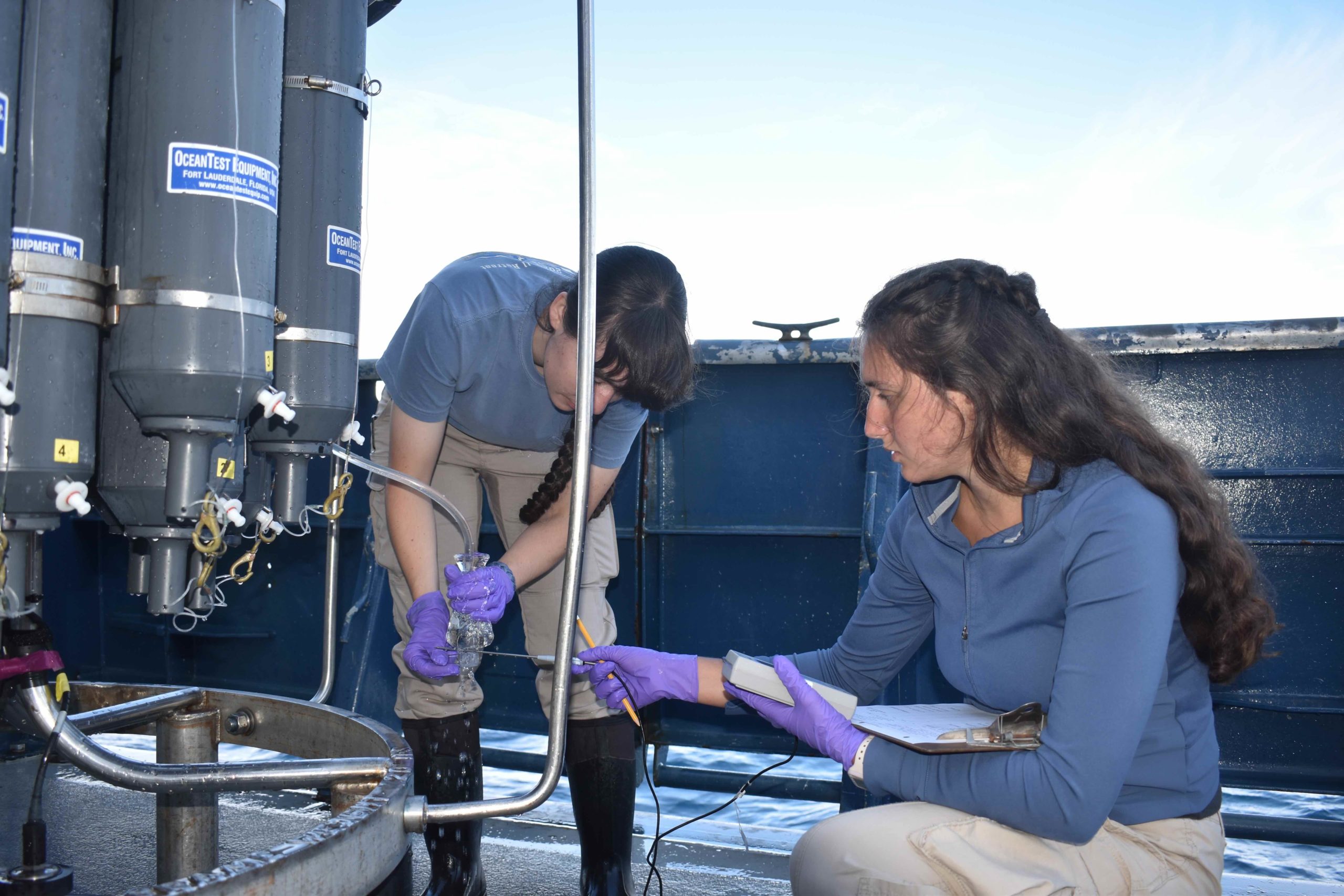
August 06, 2025 Up!….Down….
Land is no longer in sight. I recently came to a realization that not a lot of people can make this statement. Anywhere my eyes wonder off is secured by one view, the ocean and sky, the horizon being the only form of separation between the two. This magical assurance of pure isolation anywhere you look. Time has lost its’ value as minutes flow into hours and hours into days, all blending into one unforgettable journey.
We are shearing the waters on our 10-hour voyage towards the long-awaited encounter with the hydrothermal vents. Today I overheard that we will be getting to the vents in only three more days. I am starting to get into the routine of things, after spending the majority of my day sleeping due to motion sickness. My cabin is located at the bow (front) of the ship, which makes every wave seem gigantic because the nose of the ship cuts through the waves first. Laying on my top bunk, I counted the number of seconds it took for the nose to lift up and crash. The strength of the waves almost picking me up from my bed and as we crossed beyond the wave crest, I was being pressed into my bed. It really feels like a nightmare where you get on a roller coast that lasts for 10 hours. Up!… Down…. Up!… Down… Up!… Down…
Our most recent mission is relatively close to Axial Base where we conducted a CTD cast to 2600 m, taking the rosette just about an hr to get to this depth. A CTD consists primarily of two key elements, 24 Niskin bottles, and a conducting wire which serves as a mechanism for deployment and recovery communication to the instrument package. When the CTD reaches a desired depth, the bottles are “fired” from the computer lab, which allows for the collection of water samples at that depth. As students, with the help of our lead scientists and wonderful student ambassadors, we were able to open the nozzles on the Niskin bottles and collect the water for various follow-on measurements – oxygen, temperature, nutrients, chlorophyll, ect. After the CTD casts, the ROV Jason was deployed.
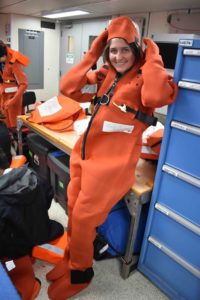
August 04, 2025
Today we begin sailing for our two-week excursion. At this point, if you have made the mistake of not taking Dramamine (Seasick preventing medicine) the night before departure, here are some tips for you! If you ever happen to find yourself bouncing back and forth on R/V Atlantis heading out into what can be the brutal Pacific Ocean, the instructions are quite frank but in the moment priceless.
- Step One. Accept that it was a big mistake not to take Dramamine the night before sailing and tell yourself not to do it again.
- Step Two. Stay outside and look out at the horizon. While you are on outside entertain yourself by watching out for whales, you might be lucky enough.
- Step Three. Enjoy some plain crackers and sip on water or apple juice. Ginger candy is a popular option as well.
At this point if jumping overboard still seems like a better option, please, seek help from our wonderful SSSGs. They would love to help you now, rather than fishing you out later. A fire drill happens just within 30 minutes after leaving port, which in hand involves Immersion suit training. I guess they really help plan out the logistics for a successful swim to shore.
